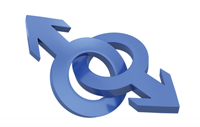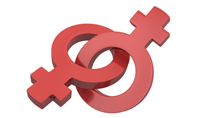Page Content

Some of the following terms and definitions have been adapted from the booklet Safe and Caring Schools for Lesbian and Gay Youth: A Teacher’s Guide, published by the Alberta Teachers’ Association.
Ally: A person, regardless of his or her sexual orientation or gender identity, who supports and stands up for the human and civil rights of LGBT (lesbian, gay, bisexual, transgender, transsexual and two-spirited identities) people.
Bisexual: A person who is attracted physically and emotionally to both males and females.
Closet: Hiding one’s sexual orientation or gender identity from others in the workplace, at school, at home or with friends.
Coming out: 1. The process through which LGBT people recognize and acknowledge their non-heterosexual orientation and integrate this understanding into their personal and social lives. 2. The act of disclosing this orientation or identity to others.
Gay: A person who is physically and emotionally attracted to someone of the same sex. The word gay is used to refer to both males and females or to males only.
Gender identity: A person’s internal sense or feeling of being male or female. Gender expression relates to how a person presents his or her sense of gender to the larger society. Gender identity and gender expression are often closely linked with the term transgender. “Many transgender people seek support and acceptance from the gay and lesbian community, where gender norms are often more inclusive” (Ryan and Futterman 1998, 48).
Heterosexism: The assumption that everyone is heterosexual and that this sexual orientation or gender identity is superior. Heterosexism is often expressed in more subtle forms than homophobia and can be characterized by the “denial, denigration, and stigmatization of non-heterosexual identity, behaviour, relationships or community” (Ryan and Futterman 1998, 12).
Heterosexual: A person who is sexually and emotionally attracted to someone of the opposite sex, also commonly referred to as straight.
Homophobia: Fear or hatred of homosexuality in others, often exhibited through prejudice, discrimination, bullying or acts of violence. Ryan and Futterman (1998) also define homophobia as “institutionalized fear, hatred, prejudice, or negative attitudes towards [LGBT persons or] homosexuality that results in invisibility, discrimination, neglect or mistreatment” (p. 12).
Homosexual: A person who is sexually and emotionally attracted to someone of the same sex. Because the term is associated historically with a medical model of homosexuality and can have a negative connotation, most people prefer terms such as lesbian, gay or bisexual.

Intersexual: A person who is born with anatomy or physiology that does not conform to cultural or societal expectations of a distinctly male or female gender. Historically, the medical community labelled these people as hermaphrodites and performed sex reassignment surgery in early infancy. Contemporary perspectives have sought to question and challenge the arbitrary practice of gender reassignment surgery as a form of compulsory identity or genital mutilation.
Lesbian: A female who is attracted physically and emotionally to other females.
LGBT/GLBT: Commonly used acronyms that are shorthand for lesbian, gay, bisexual, transgender, transsexual and two-spirited identities. Sexual minority is a synonymous term.
Outing: The public disclosure of another person’s sexual orientation or gender identity without that person’s permission or knowledge. Such disclosure is disrespectful and potentially dangerous to the outed person.
Queer: Historically, a negative term for homosexuality. More recently, the LGBT movement has reclaimed the word to refer to itself. Increasingly, the word queer is popularly used by LGBT youth as a positive way to refer to themselves.
Questioning: A person who is unsure of his or her sexual orientation or gender identity.
Rainbow flag: A symbol of the LGBT movement designed in 1978. The rainbow flag is recognized by the International Congress of Flag Makers.
Reclaimed language: Taking terms or symbols that have had a derogatory connotation and using them in a positive way to name oneself or one’s experience. For example, LGBT people often use the words dyke and queer in a positive and affirming way to refer to themselves. Pink and black inverted triangles that were once used to identify gay and lesbian prisoners in Nazi concentration camps have been reclaimed to serve as an enduring symbol of gay and lesbian pride and as a reminder to the world to speak up against abuses directed at gay, lesbian, bisexual and transgender people.
Transgender: A person whose gender identity, outward appearance, expression or anatomy does not fit into conventional expectations of male or female. Often used as an umbrella term to represent a wide range of non-conforming gender identities and behaviours.
Transsexual: A transgendered person who has had treatments to alter the sex of his or her body. Many transsexual people report feeling “trapped in the wrong body” such that their internal feelings and emotions do not match their external biological sex.
Two-spirited: Some Aboriginal people identify themselves as two-spirited rather than as lesbian, gay, bisexual, transgender or transsexual.
Reference
Ryan, Caitlin and Donna Futterman. 1998. Lesbian and Gay Youth—Care and Counseling. New York: Columbia University Press.
